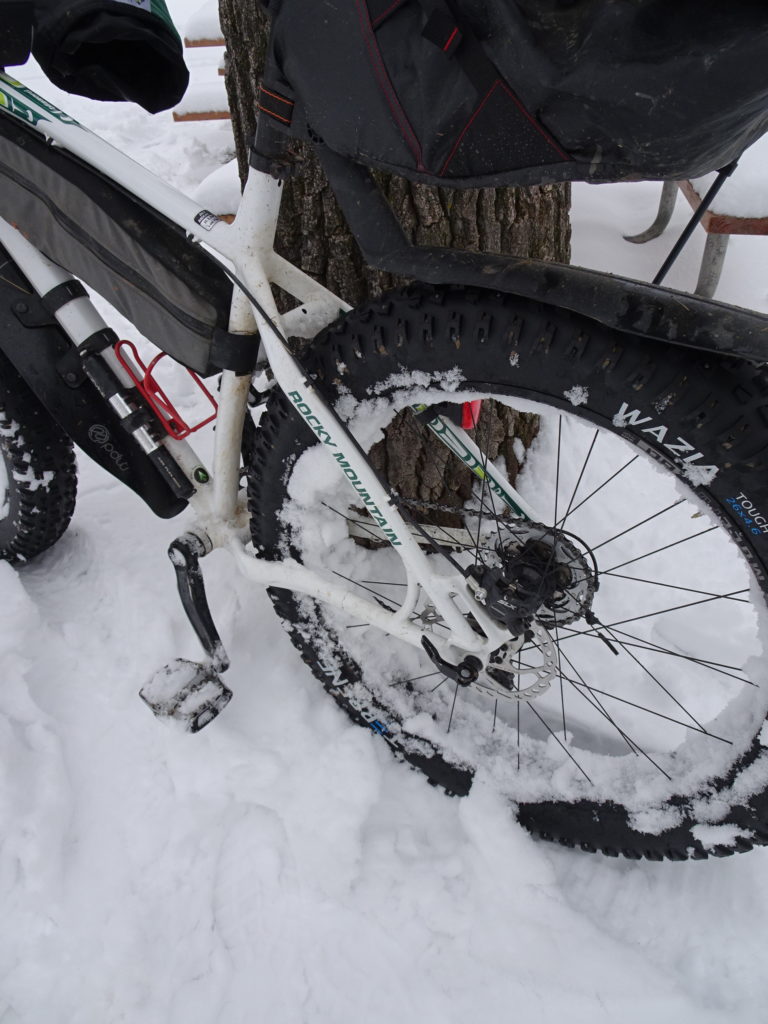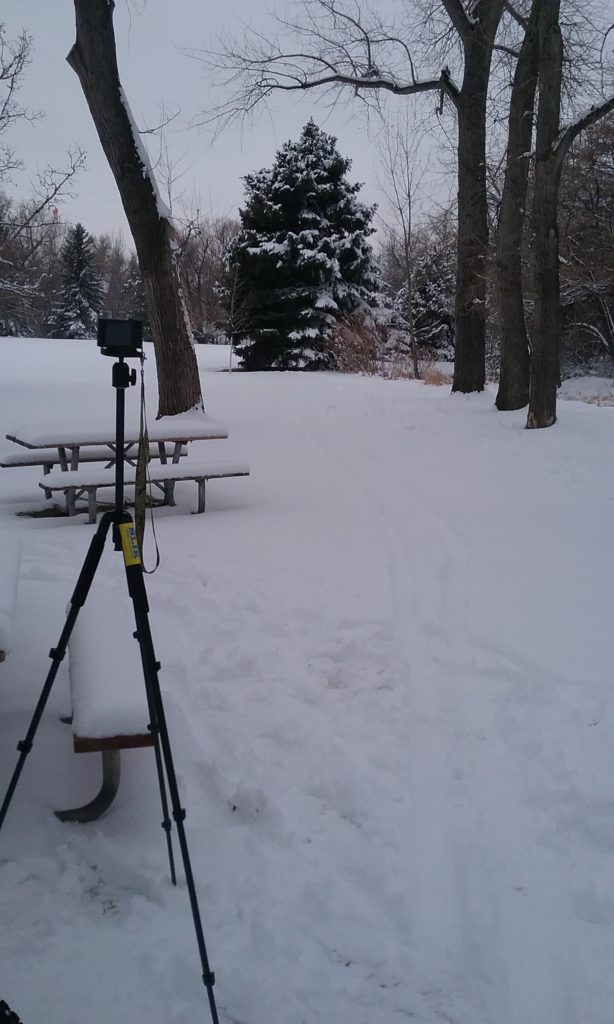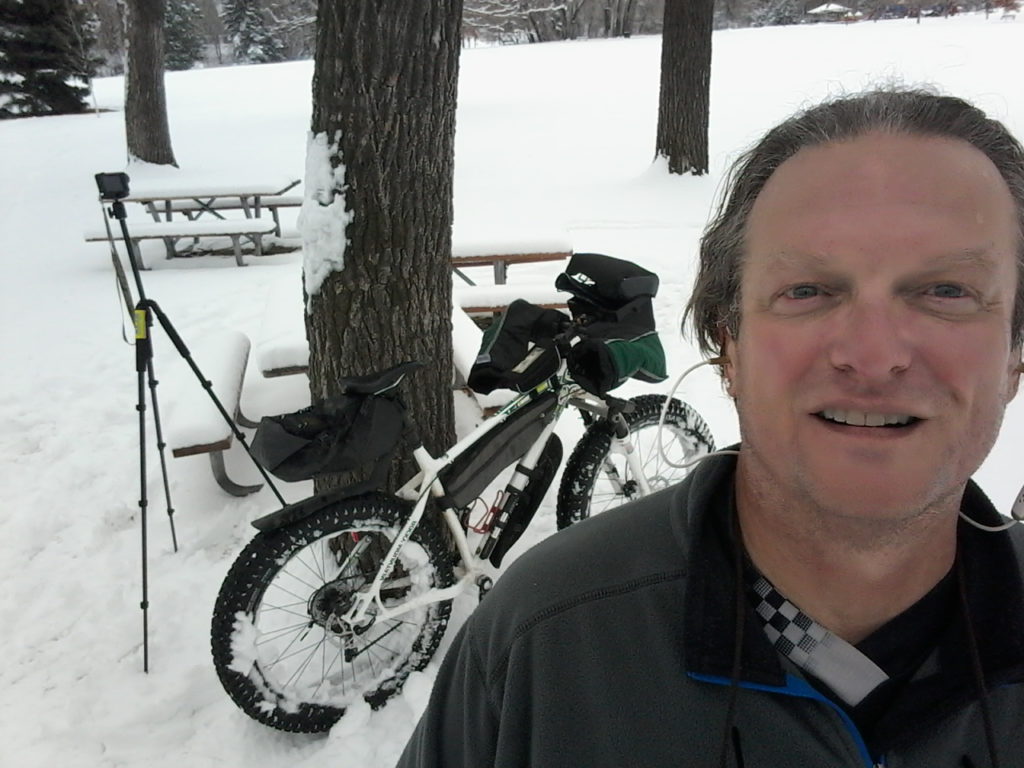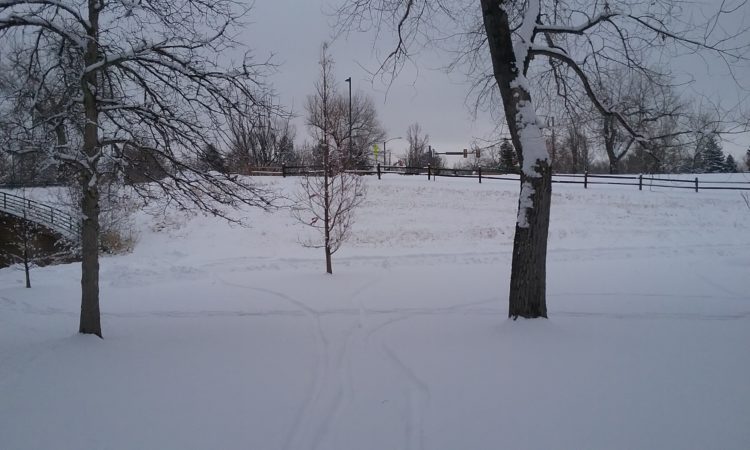TUNAGE: No Doubt
SEEN: Lots of families and dogs having fun on sled hills. Only one other fat bike track seen on trails.
Riding is impacted mostly by the snow moisture content.
The light fluffy stuff Colorado and Utah have is heaven on the bike as well as the snowboard. This snow is ride-able with 6+ inches on a firm surface underneath. This is a heavenly float on untracked, smooth and relatively flat trails.
The wet and heavy snow at the other extreme will pose some challenges riding with more than 3 inches. It’s feasible but may not be fun. When temperatures hover around freezing, the thaw/freeze situation generates some very different riding conditions that can change quickly.
When things start to freeze up after some damp snow, it begins to crust up making it difficult to turn and requires much more effort to push it over untracked. During twilight you’ll start to hear the snow crunch and by dark the choppy surface solidifies making the ride bumpy and noisy.
After a day or so the trails change. The pedestrian, horse, and fat bike traffic have packed down a single track or two of firm surface. If you stay on the track with the firm surface, the effort and speed will feel normal. If you wander off the narrow trailpack, you will be gaining needed trail experience. Read hard lessons in ruts, channels, and screwball terrain.
Managed momentum is one key to snow riding. Most spills I’ve have were happening in the first 10 feet after getting onto the bike and pedalling. The torque delivered when starting by pedaling hard has caused my front wheel to slide out. I find the starts are consistent with some kind of ‘push’ to jumpstart momentum.
When descending I ride ignoring the front brake. Get your feel for the stopping distance based on just the back brake. Dirt bike and dual-sport riding best matches the handling of speed going down these slick surfaces.
In coming days, if it snows again, even more unpredictable will be the hidden ruts, channels and chop. Normally your riding would anticipate these obstacles but when hidden they can unexpectedly grab the tire causing a spill. Keep riding because it seems you develop a unique riding sense for snow the more you do it. You soon choose your tire paths more effectively, and focus on momentum and speed control. I strangely seek another fat bike track, and try to widen it uniformly.
Most of this riding I’ve described is best done with studded fat bike tires. The studs grab ice and hard surfaces in a way you have to experience. These allow the tires to grab even smooth ice surfaces. The added traction brings some comfort in the terrain and ability to climb a hill and descend with control. The studs also help with handling icy ruts. I’ve ridden without studs in the snow just fine but the rides were without any agression. These studded tires have not slide out from underneath me. I hit the trails harder and have no worries when ice is encountered.
Tire pressures I used are around 6psi front/7psi back. Until you actually ride a fatbike for a while, it’s hard to describe how different the bike handles and how well it does in deep snow at these pressures.
Big surprise to me mid-ride, my front Terrene tire went flat, but the air-pump trailside went easily and the remaining ride was uneventful. I kept the wheels rolling which is the key to having the sealant seal-up whatever caused the leak. No sealent leaks, no sound, it was just sitting in snow for 10 minutes while taking pictures. Weird.
E –



